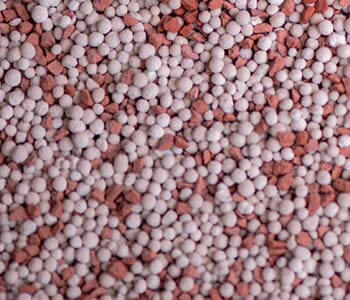Great Bend Co-op Agronomy Weekly - February 11 2019
Feb 11, 2019

Secondary and Micronutrients in Cropping Systems
Soil fertility is key in growing high yielding, high quality crops. The discussion of soil fertility normally starts with discussing the macronutrients: Nitrogen, Phosphate, and Potassium. However, like staves on a barrel, the shortest nutrient will limit the yield potential even if all others are at sufficient levels and above.
Sulfur, Calcium, Zinc, Iron, and Boron are just a handful of the secondary and micronutrients found to be deficient at times in our cropping system. Below we will discuss the characteristics, uses and benefits, and sources of each of these.
Sulfur
Sulfur is considered a secondary nutrient, meaning it is required in smaller quantities than the macronutrients, but still very important in proper plant nutrition. Sulfur is mobile in the soil, meaning it can be leached with heavy rain fall, but mostly immobile in the plant. Sulfur deficiency will show up normally on the newer leaves as a general yellowing. Sulfur is found in every plant cell and is needed for protein production, seed production, oil in oil seed crops and nodulation of legumes.
Sulfur can be applied through many sources; including, but not limited to, manure, liquid starter blends, and as a dry product.
Calcium
Calcium, another secondary nutrient, promotes root formation, nodulation, and leaf development. Deficiency symptoms affects growing points of above ground parts and also roots, and can rarely be recognized under field conditions. Calcium is immobile in the plant. Calcium is typically found in liming materials on acidic ground with low pH.
Zinc
Zinc is a micronutrient, meaning it is needed at much lower levels in the plant. Zinc is important in the germination of the seed. It is also involved in the production of chlorophyll, several enzymes involved in growth regulation, and protein production. Zinc is commonly found in Organic Matter in the soil, therefore soils with low OM are more likely to show zinc deficiencies. Zinc deficiency in crops typically shows as stunting and interveinal chlorosis of new leaves.
Banding zinc with starter blends is the most efficient way to provide zinc for the crop. It can be applied at very low rates and is compatible with most starter blend fertilizers.
Iron
Iron, another micronutrient, has similar deficiency symptoms to zinc. Chlorosis of the interveinal tissue, stunting, usually found on the newer leaves of the plant. Deficiency symptoms vary from crop to crop and even from on hybrid or variety to another. Iron Chlorosis typically shows up on poorly drained soils, and after a cool, wet period. Iron is involved in many plant enzyme systems, including the production of chlorophyll.
Iron can be applied through foliar fertilizer sources. Results from these applications vary, but have shown some benefit in fields showing intense Iron Chlorosis symptoms.
Boron
Boron, another micronutrient, is essential in the germination of pollen grains and formation of pollen tubes. It is also important in the formation of seed, cell walls, and protein. Boron is immobile in the plant, except in cotton where it is translocated to new tissue. Boron is mobile in the soil and can be leached in sandy soils. Organic matter also affects available boron.
There is a narrow gap between boron deficiency and boron toxicity, therefore very low rates of boron should be applied in areas of known boron deficiency. Boron should never touch your seed, as it can affect germination. Foliar applications of boron on alfalfa, soybeans, and corn are the most typical type of application for our area.
While these are just a sample of micronutrients, there are many others that play a role in crop growth and development. Soil sampling and tissue testing, we used in conjunctions, are the best options for understanding if you have a micronutrient deficiency concern in your crop.
